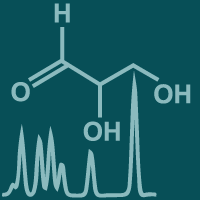Topic Menu
► Topic MenuTopic Editors

2. Department of Family Medicine, Pusan National University Yangsan Hospital, Yangsan 50612, Republic of Korea
3. Integrated Research Institute for Natural Ingredients and Functional Foods, Yangsan 50612, Republic of Korea

2. Department of Family Medicine, School of Medicine, Pusan National University, Yangsan 50612, Republic of Korea
Metabolic Syndrome, Biomarkers and Lifestyles
Topic Information
Dear Colleagues,
Metabolic syndrome is a condition characterized by a combination of risk factors that increases the likelihood of developing cardiovascular disease, stroke, and type 2 diabetes. The prevalence of metabolic syndrome has steadily increased in recent years and is estimated to affect approximately one quarter of the world's population.
Various markers of metabolic syndrome have been recognized and are still being studied. Based on the pathophysiology of visceral adipose tissue, adipocyte dysfunction, chronic low-grade inflammation, and insulin resistance, biomarkers such as anthropometric markers, insulin resistance markers, inflammatory markers, various adipokines, oxidative stress markers, vascular markers, lipoprotein markers, and hormonal markers have been proposed and play an important role in the diagnosis and monitoring of metabolic syndrome.
Lifestyle factors such as diet and physical activity are key to managing metabolic syndrome. A healthy diet can help reduce the risk of developing metabolic syndrome and improve biomarker levels. Regular exercise can also be effective in reducing the risk of metabolic syndrome by promoting weight loss, improving insulin sensitivity, and lowering blood pressure.
As such, metabolic syndrome is an important public health issue due to its association with several chronic diseases. Biomarkers can help diagnose and manage metabolic syndrome, and lifestyle interventions such as diet and exercise can effectively reduce risk and improve biomarker levels. Education on and awareness of the importance of making healthy lifestyle choices is also important. This topic aims to cover all these aspects.
Prof. Dr. Sang Yeoup Lee
Prof. Dr. Young Hye Cho
Topic Editors
Keywords
- metabolic syndrome
- biomarker
- lifestyle
- diet
- exercise
- obesity
- lipid
- insulin resistance
- diabetes
- hypertension
Participating Journals
| Journal Name | Impact Factor | CiteScore | Launched Year | First Decision (median) | APC |
|---|---|---|---|---|---|

Biomolecules
|
4.8 | 9.4 | 2011 | 18.4 Days | CHF 2700 |

Diagnostics
|
3.0 | 4.7 | 2011 | 20.3 Days | CHF 2600 |

Journal of Clinical Medicine
|
3.0 | 5.7 | 2012 | 16 Days | CHF 2600 |

Metabolites
|
3.5 | 5.7 | 2011 | 16.1 Days | CHF 2700 |

Journal of Personalized Medicine
|
- | 4.1 | 2011 | 17.4 Days | CHF 2600 |

Nutrients
|
4.8 | 9.2 | 2009 | 13.5 Days | CHF 2900 |

MDPI Topics is cooperating with Preprints.org and has built a direct connection between MDPI journals and Preprints.org. Authors are encouraged to enjoy the benefits by posting a preprint at Preprints.org prior to publication:
- Immediately share your ideas ahead of publication and establish your research priority;
- Protect your idea from being stolen with this time-stamped preprint article;
- Enhance the exposure and impact of your research;
- Receive feedback from your peers in advance;
- Have it indexed in Web of Science (Preprint Citation Index), Google Scholar, Crossref, SHARE, PrePubMed, Scilit and Europe PMC.

